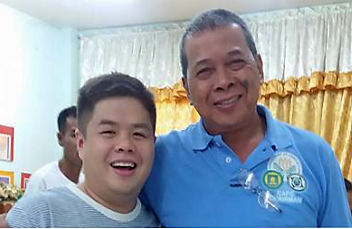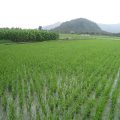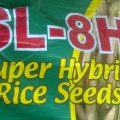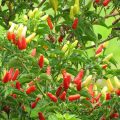A Tondo-born electrical engineer has successfully upgraded into a businessman now running 36 hectares of hybrid rice farm after having been an OFW (overseas Filipino worker) to Saudi Arabia and Japan for about 20 years.

Having been raised in a relatively crowded barangay of Manila, Tondo, Danilo Bolos, 58, never really knew anything about farming as a kid.
“I’m not a farmer’s son,” he quipped.
But having married Glenda Jacinto who is from Cabanatuan City, he just got enticed one day to plant palay.
“I saw my wife’s cousins from Sta. Rosa (Nueva Ecija) thrive in their livelihood from farming. I never really dreamt to get rich. But I just wanted to have three hectares of land where I can plant and a bahay kubo where I could enjoy a simple life,” he said.
Bolos and his wife met at Metrobank’s head office in Makati City where she was marketing staff and he was maintenance supervisor at the engineering division.
For many years, he was content at growing registered inbred seeds—then the highest yielding type of rice prior to year 2000 when there was no hybrid rice yet in the market.
He bought foundation seeds from Philrice (Philippine Rice Research Institute) and grew those seeds for his own family’s use on an original three hectares he owned.
More than 20 years ago, those three hectares were always planted, one season after the other, with such inbred seeds. Being high yielding, the seeds gave him 150 to 180 cavans per hectare.
He was content at his earning until one day he got introduced to a Department of Agriculture (DA) program that taught farmers to grow hybrid rice seeds. His contentment was challenged.
He made sure to take farming more seriously. He attended many seminars given by the government—DA technicians and municipal agriculturists — that enabled him to become an expert at hybrid rice farming.
“I felt that farming isn’t something that should just be taken as a hobby. But it should be studied very seriously and must be considered as a full-time job,” said Bolos.
And that became the milestone for this Tondo-bred man to show his great potential as a farmer-leader.
“When it was just being introduced, many criticized SL-8. They said it was disease-prone, and the rice spoils fast,” he said. “Then, hybrid seeds even sold lower in the market by P1 per kilo compared to other seeds.”
Despite the criticisms, he found a big tradeoff for using hybrids—they yielded much more—200 cavans per hectare.
When he got the chance to take another three hectares of land as mortgage for a loan amount, he never thought twice, but devoted the entire mortgaged land to growing hybrid SL-8H.
That began to give him the income boost he never dreamt of. Now he grows mostly SL-8H on 36 hectares particularly during the dry season.
“In the dry season, my inbred just occupies one hectare, the rest are SL 8seeds,” he said. “Some are even surprised that I grow SL-8 during the rainy season. Why not—if I harvest 120 from inbreds, I still harvest more – around 150 to 160 – from SL-8 in the west season?”
In the rainy season, he devotes as much as 10 hectares for hybrids—in lands near his sight so he could constantly monitor them.
Since he now enjoys the fruit of his risk taking and persistence in growing SL-8H, he has also taken the effort to reach out to other farmers who have yet to benefit from hybrid seeds.
As founding chairman of the federation of irrigators associations STAR Capalay (Sta. Rosa, Cabanatuan, Palayan federation of Irrigation Association or IA), he helps with 42 other farmer-leader/president of IAs farmers needing assistance in growing rice.
One of such assistance is in effect an endorsement of a person as a genuine farmer-member of the STAR Kapalay. Through this membership, farmers may borrow money from the DA-Land Bank of the Philippines’ loan program “Sikat Saka.” The program lends P40,000 hectare for inbred and P50,000 hectare for hybrid – usually up to P150,000 per season.
He has become a model for other farmers in trying new hybrid varieties that may give higher yield owing to new research benefits—such as better disease resistance.
In the last rainy season,he just tried on his field SL-12H as a demonstration of a transplanted hybrid. That gave him a good yield at 254 cavans.
He has mechanized his farm– tractor and harvester. As a farmer-leader, he got a gift from DA – a transplanter.
He knows the intrigue of mechanization—that some farm help lose their job as machines take over their work.
“I try to tap them to take on important jobs like cleaning up irrigation canals during the dry season. We need to have deeper irrigation canals to avoid flooding during the wet season,” he said.
As chairman of this IA federation, his financial compensation comes in the form of an occasional fertilizer grant from the government when calamities come.
He doesn’t mine that he doesn’t get paid in leading the IA. But perhaps his service to the community is a win-win for him—having always been first to benefit from government programs when calamities arise since he’s always first in the list of authentic farmers.
At his own household, Bolos is proud to have successful children as hybrid rice farming generated for his family the needed financial provision for a good education.
Two of his children finished college—one Business Administration (at University of the Philippines) and the other Community Development—with magna cum laude honors. Both children are now taking up Law.
Income-wise, a devoted farmer may earn a net income in the millions given his determination to pursue hybrid rice farming, Bolos attests. (Growth Publishing for SL AGritech)






